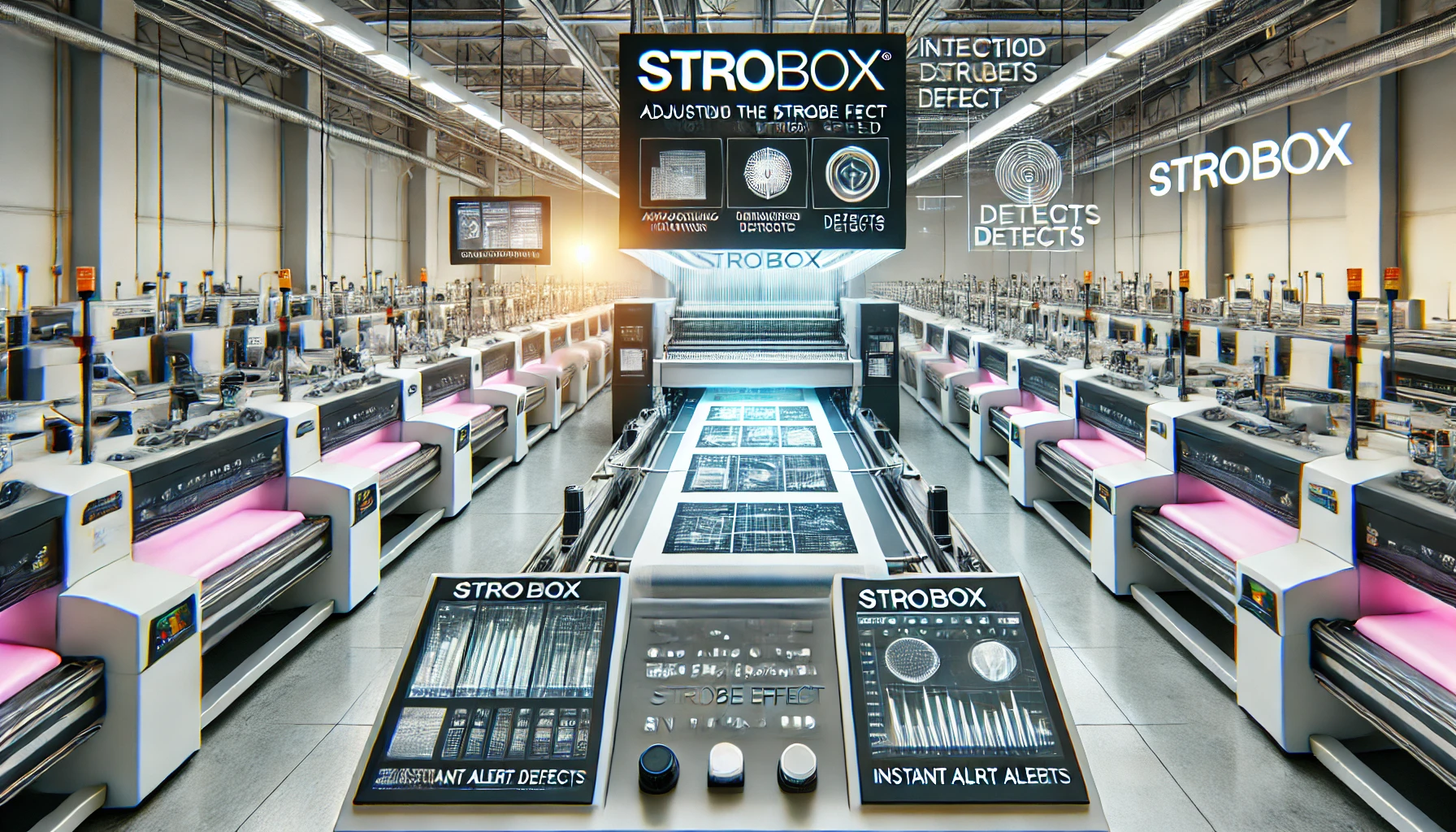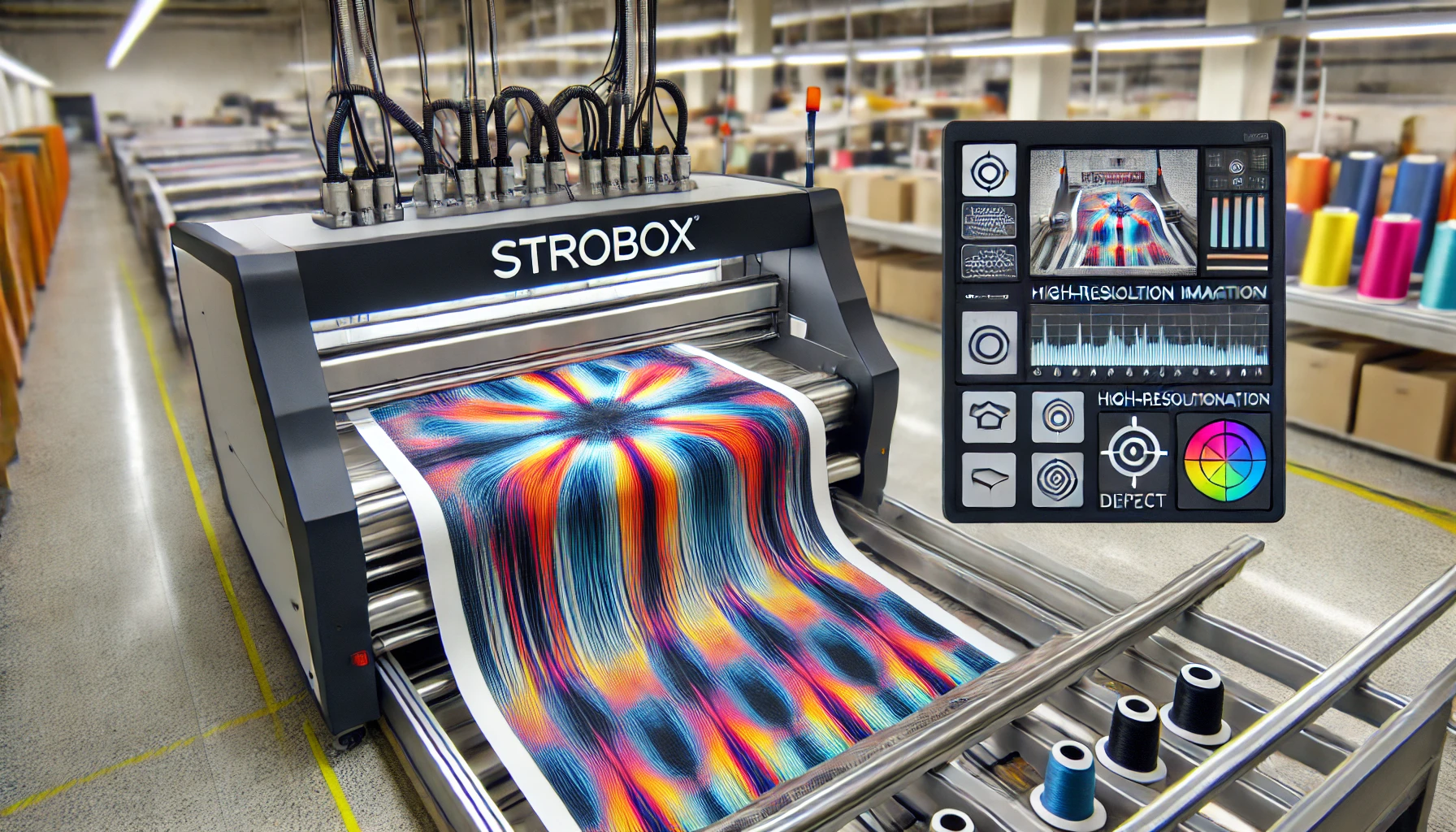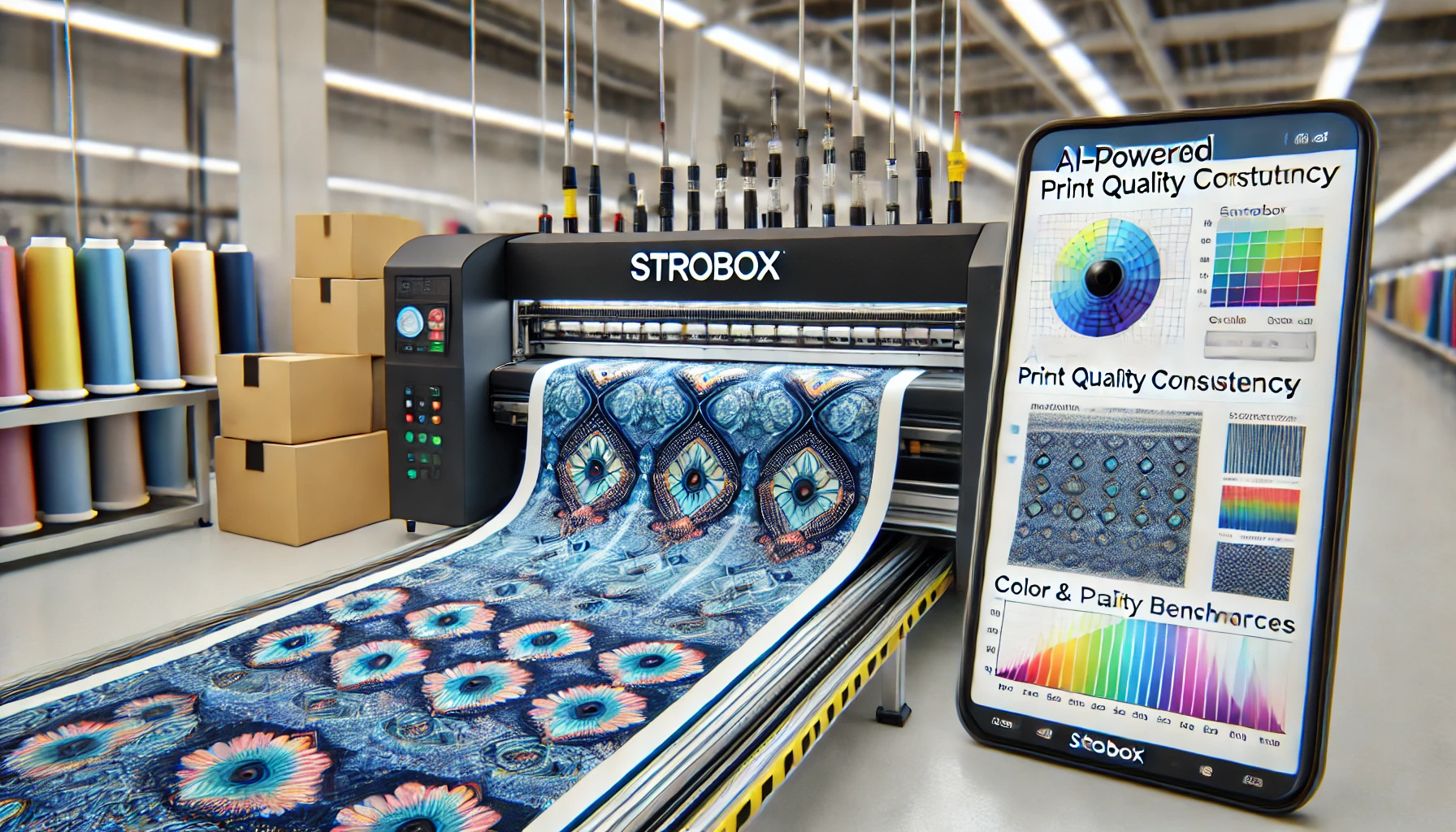
01
High-Speed Printing
Textile printing machines operate at high speeds, requiring rapid and precise inspections.
02
Defect Detection
Identifying print defects such as misalignments, color bleeding, and pattern inconsistencies.
03
Consistency and Quality
Ensuring consistent print quality across high-speed production runs.
04
Efficiency Requirements
Reducing downtime and maintaining high production speeds.
StroboX Solution
Key Features and Integration Potential
- Automated Speed Detection: Measures textile printing machine speed and adjusts the strobe effect.
- High-Resolution Imaging: Captures detailed images of printed textiles.
- AI-Powered Analysis: Compares images to standard print quality benchmarks to identify defects.
- Instant Alerts: Provides immediate notifications for detected print defects.
- Integration with Printing Systems: Integrates with existing textile printing control systems for streamlined workflow.
Usecases

Feature: High-Resolution Imaging
Benefit: Ensures high-quality textile prints by detecting defects in real-time, reducing waste.
Feature: AI-Powered Analysis
Benefit: Ensures consistent color quality and pattern alignment, enhancing the visual appeal of printed textiles.

Potential Benefits
01
Increased Efficiency
Automates the inspection process, significantly reducing time and labor costs.
02
Enhanced Accuracy
Provides precise and consistent quality checks, minimizing the risk of print defects.
03
Cost Savings
Reduces the need for extensive manual inspections and rework.
04
Improved Quality
Ensures high standards of print quality, enhancing product reliability and marketability.
Challenges and Considerations
- Technical Complexity: Adapting the system to various textile materials and printing designs.
- Quality Assurance: Maintaining high standards in automated defect detection.
- Integration Challenges: Integrating with existing textile printing systems and workflows.